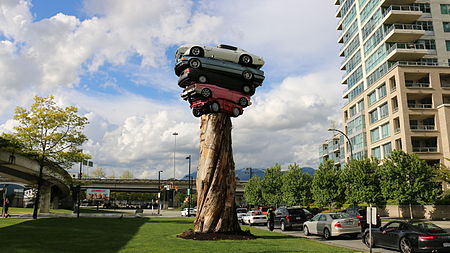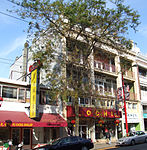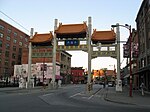Trans Am Totem
2015 establishments in British Columbia2015 sculpturesCar cultureOutdoor sculptures in VancouverWooden sculptures in Canada

Trans Am Totem was a public art installation in Vancouver, British Columbia, Canada, created by sculptor Marcus Bowcott. Part of the Vancouver Biennale, the piece was unveiled in April 2015. Located at the intersection of Quebec Street and Milross Avenue, near False Creek, east of Vancouver's Downtown area, the sculpture incorporated stacked cars on top of a base made from a tree trunk. It stood 10 metres (33 ft) high and weighed 11,340 kilograms (25,000 lb). It was dismantled on August 15, 2021, to be restored and reinstalled in a new location by the summer of 2022.
Excerpt from the Wikipedia article Trans Am Totem (License: CC BY-SA 3.0, Authors, Images).Trans Am Totem
Milross Avenue, Vancouver
Geographical coordinates (GPS) Address Nearby Places Show on map
Geographical coordinates (GPS)
| Latitude | Longitude |
|---|---|
| N 49.276105555556 ° | E -123.10181388889 ° |
Address
Brighton
Milross Avenue 120
V6A Vancouver
British Columbia, Canada
Open on Google Maps








